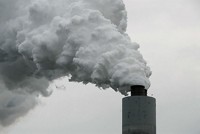Advertisement
Grab your lab coat. Let's get started
Welcome!
Welcome!
Create an account below to get 6 C&EN articles per month, receive newsletters and more - all free.
It seems this is your first time logging in online. Please enter the following information to continue.
As an ACS member you automatically get access to this site. All we need is few more details to create your reading experience.
Not you? Sign in with a different account.
Not you? Sign in with a different account.
ERROR 1
ERROR 1
ERROR 2
ERROR 2
ERROR 2
ERROR 2
ERROR 2
Password and Confirm password must match.
If you have an ACS member number, please enter it here so we can link this account to your membership. (optional)
ERROR 2
ACS values your privacy. By submitting your information, you are gaining access to C&EN and subscribing to our weekly newsletter. We use the information you provide to make your reading experience better, and we will never sell your data to third party members.
Pollution
Particulate matter pollution climbs in US, reversing years of decline
Industrial boilers, diesel vehicles, and use of natural gas drive increase
by Cheryl Hogue
October 27, 2019
| A version of this story appeared in
Volume 97, Issue 42

Particulate matter air pollution in the US rose 5.5% from 2016 to 2018, according to an analysis from a nonprofit economic research group. The increase reversed a 24.2% decline in fine particulate pollution from 2009 to 2016.
Causes of this change are increases in both economic activity and wildfires and a decrease in enforcement of the Clean Air Act, says the analysis, released by the National Bureau of Economic Research. Most of the pollution increase took place in the Midwest and West.
The two authors, economics professors at Carnegie Mellon University, examined data on the makeup of fine particulate matter, which is 2.5 µm in diameter or smaller. Exposure to particulates of this size is linked to cardiovascular and lung problems.
After controlling for particulates from wildfires, the analysis found that elemental carbon fine particulates rose nearly 21% from 2016 to 2018. The authors determined the increase in carbon particulates came mainly from diesel vehicles and some industrial boilers running on coal or fuel oil. During the same period, nitrate particulates rose 7% because of greater use of natural gas in electricity generation and by households and industry.
Meanwhile, the level of fine particulate sulfates, which come chiefly from coal-fired power plants, has dropped nationwide since 2009. It fell by 9% from 2016 to 2018 as the use of the plants declined and remaining facilities added pollution controls, the analysis says.
The US Environmental Protection Agency is in the process of deciding whether to tighten the current health-based standard for fine particulate matter of 12 µg/m3 of air as an annual average.




Join the conversation
Contact the reporter
Submit a Letter to the Editor for publication
Engage with us on Twitter